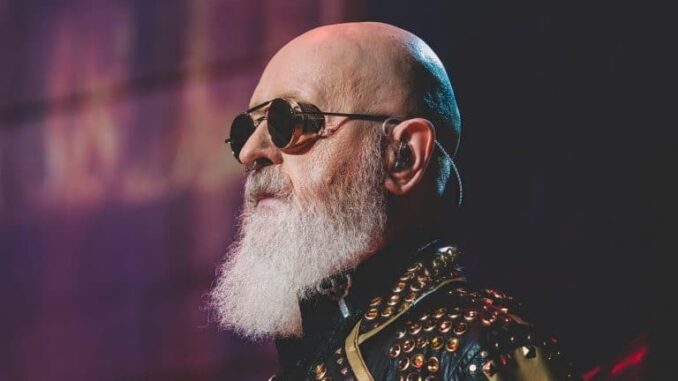
When Rob Halford, the powerhouse vocalist of Judas Priest and one of heavy metal’s most recognizable figures, shared that he had quietly married his longtime partner Thomas Pence, the revelation carried a weight that was far gentler than the thunderous soundscapes he is known for. Rather than staging a grand spectacle, Halford described a simple, heartfelt ceremony — a moment of private joy, not public theater. In many ways, that contrast made the announcement resonate even more deeply.
For more than three decades, Halford and Pence have shared their lives together. Their bond was not something built overnight but something tested, strengthened, and refined over years of partnership. Marriage, for them, was not the start of a journey but a continuation — a conscious affirmation of what had already been true. Halford himself admitted that while they had been together for a very long time, taking that step added a new depth to their commitment. There’s something profoundly touching about that: after decades of love and companionship, two people still choosing to say, “Yes, we want this bond recognized.”
The fact that the marriage happened quietly is also telling. We live in a world where celebrity weddings are often broadcast and commercialized, where private lives are leveraged for publicity. Halford went in the opposite direction. Surrounded by only a few trusted friends, beside a pool and under the watchful presence of desert plants, he exchanged vows with Pence. No flashing cameras, no headlines — just authenticity. That deliberate simplicity makes the moment more powerful than any tabloid spectacle ever could.
Halford’s story cannot be separated from the broader context of his career and identity. When he publicly came out in the late 1990s, it was a groundbreaking moment in heavy metal. The genre, long associated with machismo and rigid stereotypes, wasn’t known for celebrating queer voices. By embracing his identity, Halford challenged long-standing assumptions within the community and carved out space for fans and musicians who might have felt invisible. His decision to live openly was courageous then, and it continues to matter today.
That makes his marriage more than just a personal milestone — it’s also symbolic. For fans who grew up idolizing Judas Priest, hearing the Metal God himself speak openly about marrying his partner after so many years sends a powerful message: love and authenticity belong in every corner of life, even in the hardest, loudest edges of metal. Halford has also noted that, despite progress, homophobia persists in many parts of the world, including the United States. His willingness to share his marriage publicly, even in understated form, is a reminder that visibility still matters.
What’s most striking, however, is the humanity of it all. Here’s a man whose voice has filled stadiums, whose stage presence has defined a genre, and yet his most meaningful moment of late wasn’t played out on a global stage. It happened quietly, away from spotlights, in a ceremony that was about intimacy rather than image. That juxtaposition — of legendary performer and private individual — is what makes this revelation so moving.
In the end, Halford’s marriage is not a chapter break in a rock biography but a deeply personal testament to love’s persistence. It tells us that commitment isn’t defined by when you formalize it, but by the devotion you show every day. It shows us that even icons find meaning in small, tender gestures. And above all, it reminds us that behind the “Metal God” persona is a man whose greatest triumph may simply be the enduring love he shares with his partner.